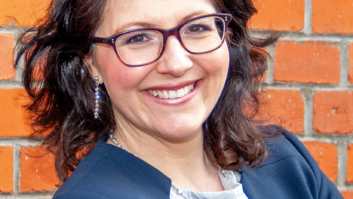 New opportunities
New opportunities
Not everyone in the broadcast supply chain is hardware-driven, and although software developers didn’t directly suffer the same issues with supply, they too have had to move fast to support a rapidly changing broadcast landscape.
With broadcasters looking to remote and distributed production just to get content on air, many reached out to SaaS to accelerate their workflows, which in many cases accelerated existing technologies which were already being developed.

Ashwin Limaye is the CPO of Magnifi’s parent company, VideoVerse: “The crisis revealed unmet needs faced by our customers in the remote work and virtual collaboration landscape, and we swiftly adapted our R&D focus to address these emerging demands.
“The urgency and unpredictability of the pandemic propelled us to expedite our innovation cycle. We adopted agile methodologies, streamlined decision-making processes, and fostered a culture of rapid experimentation. As a result, we were able to bring new products and features to market at an accelerated pace.”

Tedial, whose cloud-native smartWork Media Integration Platform simplifies media workflows, also stepped up a gear while resolutely staying remote. CTO Julián Fernández-Campón says while chip shortages impacted some on-prem projects, the MAM specialist has had a cloud mindset for many years which allowed it to provide a full remote working schema from day one. And like Magnify, the global environment absolutely sped up the development and deployment of the company’s technologies.
“The pandemic did indeed affect our long-term plans as some of the business processes we anticipated would take years came sooner than expected, such as remote editing, content distribution in the cloud and many other collateral services,” he says. “We had to prioritise some integrations and developments differently than previously planned.
“The good thing about this is that we’ve seen it as an opportunity to engineer well-structured and efficient solutions, as some customers required a new service quickly to solve a specific problem.”
Remote collaboration
A recurring theme amongst software development companies as they scrambled to service broadcasters’ changing needs was remote collaboration. With no need for a physical manufacturing base, many developers used Covid to turn remote working into a strength, although many had been working this way long before the pandemic forced the rest of the world to catch up.
Magnify’s Limaye: “We have always understood the importance of attracting talent, regardless of physical location, and have created a team of professionals across multiple geographies. It’s a trend that has grown exponentially after the pandemic.
“The pandemic prompted us to expand our talent pool globally. With remote work becoming the norm, we leveraged the opportunity to recruit top-notch researchers and developers from around the world. This diversification of our team brought fresh perspectives, enhanced expertise, and enriched our R&D capabilities.”
Driving R&D in a structured manner is more important than ever in distributed environments. Founded in 2011 and based in London, video compression specialist V-Nova says that not only is finding the right technical team to fit with the company culture time-consuming, but it also prevents them from doing actual engineering.

“The pandemic taught us the importance of face-to-face interaction in the R&D and product development teams,” says V-Nova’s head of innovation Rick Clucas. “Although V-Nova was already working in a hybrid mode and handled the Covid confinement well, informal interactions within the team and with other engineers to bounce ideas, discuss problems and just get ideas from unrelated conversations is yet unbeaten by conference calls.
“We are still using a hybrid working model of office and home days and still have to consider colleagues who are based abroad, including the US, Italy, India and Australia.”
Hybrid working
According to research from organisations such as Gartner, hybrid environments like these are not just limited to developers; in fact, according to Tedial’s Fernández-Campón, the future of broadcast also lies in its composable nature.
“A composable business possesses the ability to swiftly adapt to evolving market conditions, customer requirements, and technological advancements,” he says. “This adaptability is achieved through the use of modular building blocks that can be easily assembled and reassembled as per the specific needs.
“Gartner’s concept of composable businesses aligns with Tedial’s mission of democratising business improvement. Gartner emphasises that achieving a composable business necessitates adopting composable thinking, business strategies, and technology. The introduction of smartPacks, which comprises a suite of reusable components, empower individuals to create or modify services without the need for coding.”
New ways of working
Although the challenges may have been different, all six suppliers are working in a similar way, with redefined processes in place to protect against changes in the macro environment.
Everyone’s working models have been redefined by world events and broadcasters have had their eyes opened to new workflows as they reassess how they will work in the future. Suppliers have had to alter their approach to fit.
The ability to guard against changes is absolutely key; demographic, political, economic and technological factors have affected the entire industry from supply to delivery, and everyone is working collaboratively to guard against future uncertainty.
Imagine’s Brendon Mills has his own theory. “We talk about these two pendulums: the foundational broadcast business, and the streaming business. The market is entering into a hybrid playout era, meaning that folks are not going to all-cloud or all-traditional, but they’re going to be in this hybrid ground/cloud mode for several years.
“It has driven a very specific R&D strategy for us and we have focused that strategy around the ability to deliver this hybrid topology, to manage both the foundational products that we’ve sold over the years, their path to cloud migration and all the things in between,” he explains.
“We live in more uncertain times than ever. The hybrid model seems to be the most protective strategy for the business, and it’s also what our customers are asking for. They are looking for a balance; they want to get more and more into the cloud, yet they still want to leverage the dollars that they’ve spent on these foundational products over the years, and they don’t want to abandon that overnight.
“The question is how to balance the operating expenses with the capital expenses that you put in over the past? There are a lot of dynamics that come into play and customers are demanding options to give them a more stable footing.”
No one-size-fits-all
Perez at SSL agrees: “Everybody is talking about ‘cloud’, but the cloud will be good for some things and not for others and from our point of view, the future is more likely to be a mixture of distributed technologies.
“Some people will buy a traditional console and some I/O, but they will also buy some cloud. There will be an ability to connect and disconnect to the cloud, use a virtualised control or virtual control with a physical processing unit. These examples of virtualised control and cloud blocks working together can present many advantages and we are at a stage where people are working out how best to use these technologies.
“Post-Covid there is a push for these ways of working, and it has given us all the oomph to develop these technologies. We did a lot of remote production development during Covid and now it is used every day. It’s not like Covid went away and everybody stopped doing it; it’s now part of how everybody works.”







